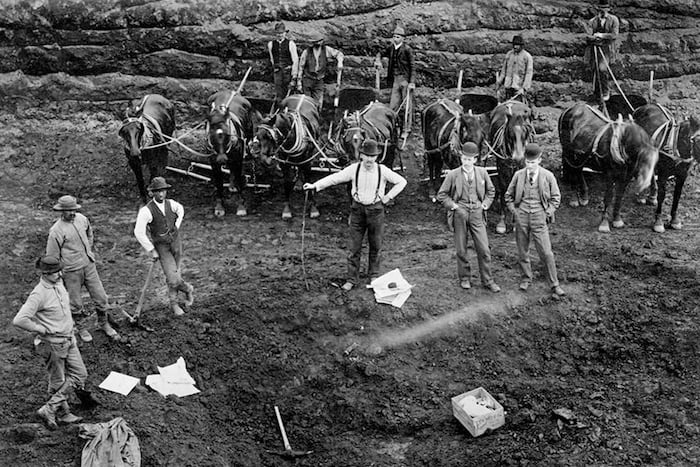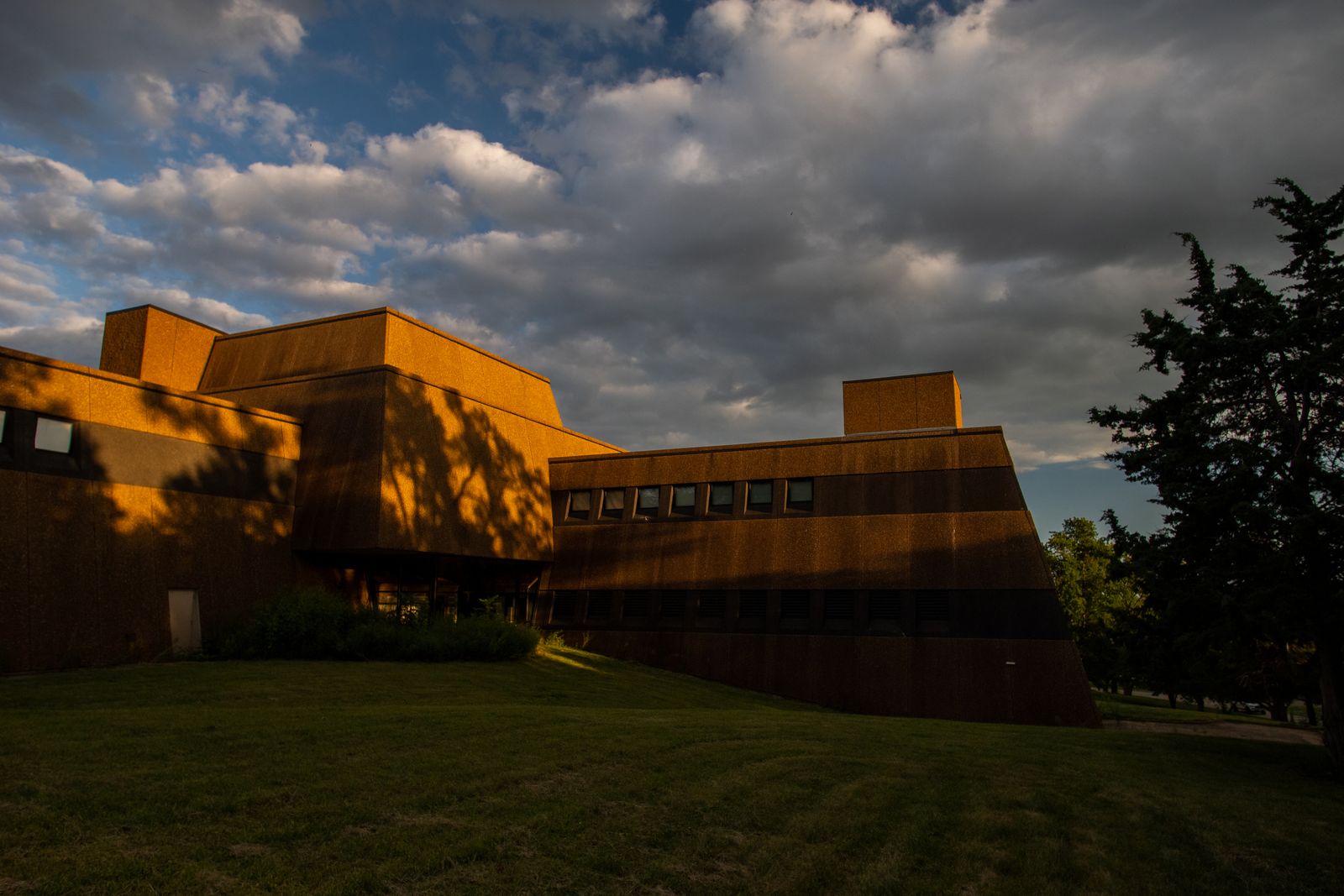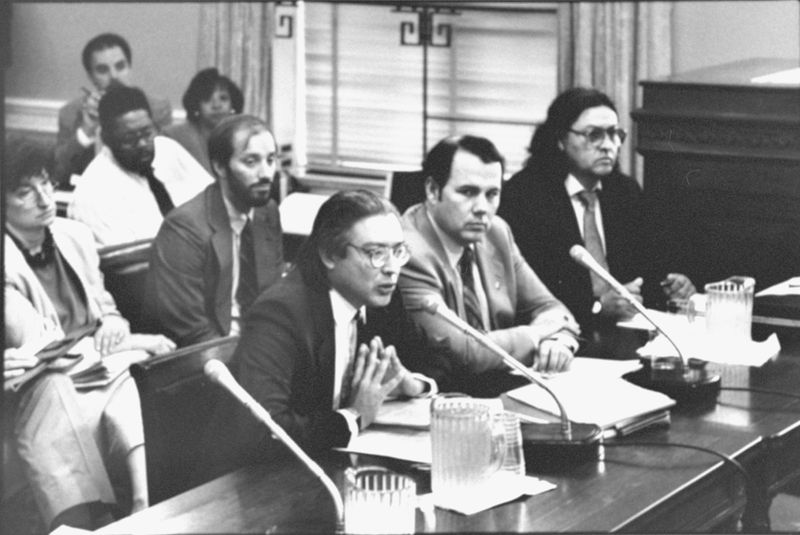Missouri
Institutions reported making 28% of the more than 4,300 Native American remains taken from Missouri available for return to tribes under NAGPRA.
There are 24 institutions located in Missouri that reported Native American remains taken from across the country.
| Institution | Remains Not Made Available for Return | Remains Made Available for Return | % of Remains Made Available for Return |
|---|---|---|---|
| University of Missouri, Columbia, Museum of Anthropology | 2,386 | 643 | 21% |
| U.S. Department of Defense | 481 | 381 | 44% |
| Missouri Department of Natural Resources | 301 | 36 | 11% |
| Missouri Department of Transportation | 196 | 0 | 0% |
| Southeast Missouri State University, Crisp Museum | 59 | 0 | 0% |
| St. Joseph Museums, Inc. | 40 | 17 | 30% |
| Museum of Osteopathic Medicine | 39 | 0 | 0% |
| University of Missouri, St. Louis | 21 | 0 | 0% |
| Missouri State University | 20 | 0 | 0% |
| U.S. Department of the Interior | 19 | 0 | 0% |
| Kansas City Museum | 18 | 2 | 10% |
| Missouri Historical Society | 15 | 2 | 12% |
| U.S. Department of Agriculture | 10 | 0 | 0% |
| University of Central Missouri | 10 | 6 | 38% |
| Washington University | 9 | 0 | 0% |
| St. Louis Science Center | 5 | 1 | 17% |
| College of the Ozarks, Ralph Foster Museum | 3 | 0 | 0% |
| Cape Girardeau County Sheriff's Office | 0 | 2 | 100% |
| Central Methodist University | 0 | 1 | 100% |
| Culver-Stockton College | 0 | 10 | 100% |
| History Museum on the Square | 0 | 1 | 100% |
| Perry County Coroner's Office | 0 | 1 | 100% |
| St. Louis County Office of the Medical Examiner | 0 | 2 | 100% |
| Stoddard County Sheriff's Office | 0 | 1 | 100% |
There are 51 institutions that reported Native American remains taken from Missouri.
| Institution | Remains Not Made Available for Return | Remains Made Available for Return | % of Remains Made Available for Return |
|---|---|---|---|
| University of Missouri, Columbia, Museum of Anthropology | 2,209 | 642 | 23% |
| Missouri Department of Natural Resources | 288 | 36 | 11% |
| Missouri Department of Transportation | 196 | 0 | 0% |
| Harvard University | 83 | 0 | 0% |
| U.S. Department of Defense | 80 | 341 | 81% |
| Southeast Missouri State University, Crisp Museum | 59 | 0 | 0% |
| American Museum of Natural History | 21 | 0 | 0% |
| University of Missouri, St. Louis | 21 | 0 | 0% |
| Missouri State University | 20 | 0 | 0% |
| U.S. Department of the Interior | 19 | 3 | 14% |
| University of Kansas | 17 | 0 | 0% |
| University of Tennessee, Knoxville | 12 | 84 | 88% |
| Field Museum | 11 | 0 | 0% |
| U.S. Department of Agriculture | 10 | 0 | 0% |
| University of Central Missouri | 10 | 6 | 38% |
| U.S. Environmental Protection Agency | 9 | 0 | 0% |
| Brigham Young University, Museum of Peoples and Cultures | 8 | 0 | 0% |
| Mutter Museum, College of Physicians of Philadelphia | 8 | 0 | 0% |
| Washington University | 8 | 0 | 0% |
| Wichita State University, Department of Anthropology | 7 | 0 | 0% |
| Missouri Historical Society | 6 | 1 | 14% |
| University of Michigan Museum of Anthropology | 6 | 0 | 0% |
| Tioga Point Museum | 5 | 0 | 0% |
| University of Wisconsin, Madison, Department of Anthropology | 4 | 0 | 0% |
| St. Joseph Museums, Inc. | 3 | 15 | 83% |
| University of Pennsylvania Museum of Archaeology and Anthropology | 3 | 0 | 0% |
| Kansas City Museum | 2 | 1 | 33% |
| Nassau County Department of Parks and Recreation | 2 | 0 | 0% |
| Hastings Museum | 1 | 0 | 0% |
| Wayne State University | 1 | 0 | 0% |
| Wisconsin Historical Society | 1 | 0 | 0% |
| Yale University, Peabody Museum of Natural History | 1 | 0 | 0% |
| Autry Museum of the American West | 0 | 1 | 100% |
| Cape Girardeau County Sheriff's Office | 0 | 2 | 100% |
| Central Methodist University | 0 | 1 | 100% |
| Culver-Stockton College | 0 | 10 | 100% |
| Denver Museum of Nature and Science | 0 | 2 | 100% |
| Grand Rapids Public Museum | 0 | 2 | 100% |
| History Museum on the Square | 0 | 1 | 100% |
| Illinois State Museum | 0 | 19 | 100% |
| Indiana University | 0 | 4 | 100% |
| Kansas State University | 0 | 14 | 100% |
| Museum of Natural History and Planetarium | 0 | 1 | 100% |
| Perry County Coroner's Office | 0 | 1 | 100% |
| Robert S. Peabody Institute of Archaeology, Phillips Academy | 0 | 28 | 100% |
| St. Louis County Office of the Medical Examiner | 0 | 2 | 100% |
| St. Louis Science Center | 0 | 1 | 100% |
| Stoddard County Sheriff's Office | 0 | 1 | 100% |
| University of Arkansas | 0 | 2 | 100% |
| University of Iowa, Office of the State Archaeologist | 0 | 4 | 100% |
| University of Nebraska State Museum | 0 | 5 | 100% |
Institutions made Native American remains taken from Missouri available for return to 19 tribes.
| Tribe | Remains Made Available for Return to Tribe |
|---|---|
| Osage Nation | 681 |
| Sac and Fox Nation of Missouri in Kansas and Nebraska | 340 |
| Sac and Fox Nation, Oklahoma | 340 |
| Sac and Fox Tribe of the Mississippi in Iowa | 340 |
| Otoe-Missouria Tribe of Indians, Oklahoma | 178 |
| Pawnee Nation of Oklahoma | 81 |
| Omaha Tribe of Nebraska | 36 |
| Iowa Tribe of Kansas and Nebraska | 28 |
| Iowa Tribe of Oklahoma | 27 |
| Ponca Tribe of Indians of Oklahoma | 21 |
| Ponca Tribe of Nebraska | 21 |
| Quapaw Nation | 11 |
| Kaw Nation, Oklahoma | 10 |
| Kickapoo Traditional Tribe of Texas | 6 |
| Kickapoo Tribe of Indians of the Kickapoo Reservation in Kansas | 6 |
| Kickapoo Tribe of Oklahoma | 6 |
| Peoria Tribe of Indians of Oklahoma | 4 |
| Caddo Nation of Oklahoma | 1 |
| Three Affiliated Tribes of the Fort Berthold Reservation, North Dakota | 1 |
Institutions reported Native American remains taken from 85 counties in Missouri.
| County | Remains Taken From County Not Made Available for Return | Remains Made Available for Return | % of Remains Made Available for Return |
|---|---|---|---|
| Pemiscot County | 464 | 5 | 1% |
| New Madrid County | 385 | 0 | 0% |
| Mississippi County | 327 | 4 | 1% |
| Boone County | 288 | 0 | 0% |
| Butler County | 203 | 0 | 0% |
| Stoddard County | 130 | 1 | 1% |
| Platte County | 116 | 66 | 36% |
| Jefferson County | 103 | 4 | 4% |
| St. Louis County | 100 | 6 | 6% |
| Lincoln County | 86 | 0 | 0% |
| Barry County | 64 | 0 | 0% |
| Dunklin County | 59 | 0 | 0% |
| Ste. Genevieve County | 57 | 0 | 0% |
| Pulaski County | 47 | 41 | 47% |
| Callaway County | 40 | 5 | 11% |
| Howard County | 36 | 1 | 3% |
| McDonald County | 30 | 29 | 49% |
| Phelps County | 30 | 3 | 9% |
| Atchison County | 29 | 2 | 6% |
| Cape Girardeau County | 29 | 2 | 6% |
| Ripley County | 27 | 0 | 0% |
| St. Charles County | 27 | 0 | 0% |
| Stone County | 24 | 0 | 0% |
| Cooper County | 22 | 0 | 0% |
| Knox County | 21 | 0 | 0% |
| Clay County | 19 | 0 | 0% |
| Benton County | 15 | 102 | 87% |
| Pettis County | 14 | 2 | 13% |
| Christian County | 12 | 0 | 0% |
| Wayne County | 12 | 0 | 0% |
| Miller County | 11 | 0 | 0% |
| Scott County | 10 | 0 | 0% |
| Ozark County | 9 | 0 | 0% |
| Pike County | 9 | 39 | 81% |
| Randolph County | 9 | 0 | 0% |
| Saline County | 9 | 146 | 94% |
| Daviess County | 8 | 0 | 0% |
| Osage County | 8 | 0 | 0% |
| Greene County | 7 | 0 | 0% |
| Montgomery County | 7 | 0 | 0% |
| Ray County | 7 | 1 | 13% |
| Hickory County | 6 | 14 | 70% |
| Shannon County | 6 | 0 | 0% |
| Cedar County | 5 | 119 | 96% |
| Cole County | 5 | 0 | 0% |
| Dent County | 4 | 0 | 0% |
| Franklin County | 4 | 0 | 0% |
| Jackson County | 4 | 2 | 33% |
| Adair County | 3 | 4 | 57% |
| Camden County | 3 | 1 | 25% |
| Dade County | 3 | 121 | 98% |
| Laclede County | 3 | 0 | 0% |
| Lewis County | 3 | 0 | 0% |
| Monroe County | 3 | 271 | 99% |
| Perry County | 3 | 1 | 25% |
| Webster County | 3 | 0 | 0% |
| Carroll County | 2 | 0 | 0% |
| Douglas County | 2 | 0 | 0% |
| Lafayette County | 2 | 0 | 0% |
| Macon County | 2 | 0 | 0% |
| Moniteau County | 2 | 0 | 0% |
| Nodaway County | 2 | 0 | 0% |
| Oregon County | 2 | 4 | 67% |
| Scotland County | 2 | 0 | 0% |
| Washington County | 2 | 0 | 0% |
| Carter County | 1 | 0 | 0% |
| Clark County | 1 | 1 | 50% |
| Crawford County | 1 | 0 | 0% |
| Harrison County | 1 | 0 | 0% |
| Johnson County | 1 | 6 | 86% |
| Linn County | 1 | 0 | 0% |
| Livingston County | 1 | 0 | 0% |
| Maries County | 1 | 0 | 0% |
| Marion County | 1 | 0 | 0% |
| Newton County | 1 | 0 | 0% |
| Polk County | 1 | 70 | 99% |
| Ralls County | 1 | 38 | 97% |
| Taney County | 1 | 0 | 0% |
| Vernon County | 1 | 4 | 80% |
| Andrew County | 0 | 2 | 100% |
| Buchanan County | 0 | 39 | 100% |
| Dallas County | 0 | 1 | 100% |
| Henry County | 0 | 37 | 100% |
| Madison County | 0 | 4 | 100% |
| St. Clair County | 0 | 30 | 100% |
Know how an institution is handling repatriation? Have a personal story to share? We'd like to hear from you.
Watch an informational webinar with our reporters.
This tool presents a dataset maintained by the National Park Service containing all the Native American human remains and associated funerary objects that institutions have reported to the federal government under the Native American Graves Protection and Repatriation Act. The dataset includes information about the state and county where remains and objects were taken from, which institutions hold them and whether they have been made available for return to tribes.
The data is self-reported by institutions. The amount of unrepatriated Native American remains reported by institutions is a minimum estimate of individuals and institutions frequently adjust these numbers when they reinventory groups of remains. Some institutions that are subject to NAGPRA have also entirely failed to report the remains in their possession. As a result, the numbers provided are best taken as estimates. The actual number and geographic scope of what’s held by publicly funded institutions is larger than what is presently documented.
ProPublica supplemented this dataset with information about cultural affiliation and disposition to specific tribes by systematically parsing the text of Notices of Inventory Completion published in the Federal Register. An additional dataset from the Department of Housing and Urban Development, the Tribal Directory Assessment Tool, was used for the section on remains not made available for return from counties that each tribe has indicated interest in to the federal government.
Institution location and tribal headquarters location information was provided by National NAGPRA. The location of some groups that are not federally recognized was provided through research by ProPublica.
Institutions that are part of a larger entity are grouped. (For example, the Mesa Verde National Park is part of the U.S. Department of the Interior.)
Institutions that have not submitted information to the federal government are not listed. The Smithsonian Institution is not listed because its repatriation process falls under the National Museum of the American Indian Act and it is not required to publicly report its holdings with the same detail as institutions subject to NAGPRA.
If you work for an institution and would like to provide comment on your institution’s repatriation efforts, please email [email protected]. If you think the data is incorrect or have a data request, please get in touch. We are aware of some issues with the accuracy of location information and tribes mistakenly being identified for disposition of Native American remains in published notices.
If you want to share something else with ProPublica, we’d like to hear from you.
If you have questions about implementing or complying with the Native American Graves Protection and Repatriation Act, get in touch with National NAGPRA or the NAGPRA Community of Practice.
We use the word “tribes” to refer to all groups that institutions made Native American remains available to under NAGPRA. This includes tribes, nations, bands, pueblos, communities, Native Alaskan villages, Native Hawaiian organizations and non-federally recognized groups.
Data sources from Department of the Interior, National Park Service, National NAGPRA Program, the Federal Register, Department of Housing and Development, Tribal Directory Assessment Tool


